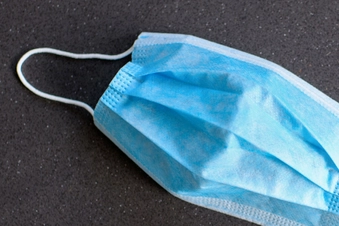Your Peyronie's Disease Appointment Checklist

Search for a Doctor
Think you may have Peyronie’s disease or want to start treatment? A urologist handles all things urinary tract and will likely be the doctor you need to see. To start your search, find out who is covered under your insurance if you’re insured, or ask for recommendations from your primary care doctor or go online.

Get to Know the Office
You may be able to get a lot of information about a practice – and see if you’ll like it – when you call. (Hint: You may be able to find some tidbits on the practice’s website, too.) Find out which days are busiest and how to contact a doctor outside of regular hours. You may also want to see if the office uses a patient portal, which can help you connect to the office online.

Confirm Coverage
If you have health insurance, you may save money by picking a doctor in your network. Your plan may let you see a doctor that’s out of your network, but it may cost more out of pocket. Check with your insurance provider so you know how much is due the day of your appointment (and see if they’ll cover any lab work, too). No coverage at all? See if the office offers a sliding scale or check out a federal health center.

Make an Appointment
Ready to set a date for your visit? You can call, or you might be able to book an appointment online. Let them know you’re a new patient and why you’d like to see the doctor. Check that they take your insurance plan, and confirm any copay amounts. Ask if you’ll need to bring anything. See if you’ll have to wear a face mask. Request an interpreter if you need one. Also, ask if they’ll want a urine sample (or other lab work) during your office visit.

Determine Who’s Going
Going to a doctor – especially a new one – can be challenging. Discussing Peyronie’s disease and its symptoms, or going through a physical exam, may be stressful. Want extra support? Ask if a friend or loved one can go with you. They can take notes for you, or just give you someone to chat with while you pass time in the waiting room. If you want somebody in the room with you, be sure to confirm with your doctor ahead of time that they allow others to go to the appointment with you.

Come Prepared
The intake questionnaire will want to know which over-the-counter or prescription medications and supplements you take. You’ll need to include doses and how often you take them. Bring details on your medical history, such as existing diseases or conditions and past surgeries. Note if you’ve had family members with Peyronie’s disease or a past injury to your penis, as that can cause it.

Get Specific on Symptoms
Expect the urologist to ask you about symptoms of Peyronie’s disease. These can include penis pain, noticeable lumps, or problems with erections. Explain when symptoms started and if you’ve had noticeable changes in penis curvature. Before the visit, jot down your top questions, and don’t leave until you have answers.

Bring Records
If you’ve been to a doctor for Peyronie’s disease before or had other tests related to it (like an ultrasound), bring those records along. Include any past readings from a goniometer, which measures the angle of your penis curve and can help your doctor see if it’s changed. Make sure the current health care professional has your former doctors’ names.

Drink Water Before You Go
Your doctor will probably want a sample of your pee the day of your visit – ask ahead of time to be sure. Otherwise, it’s a good idea to make sure you’re hydrated. If they take samples on site, you can get that done during your visit.
Show Sources
IMAGES PROVIDED BY:
1) Ridofranz / Getty Images
2) Mascot / Getty Images
3) Jetta Productions / Walter Hodges / Getty Images
4) Jordan Lye / Getty Images
5) andresr / Getty Images
6) Ariel Skelley / Getty Images
7) Savany / Getty Images
8) Utamaru Kido / Getty Images
9) Digital Vision / Getty Images
SOURCES:
Mayo Clinic: “Peyronie’s Disease.”
Cleveland Clinic: “Appointment Checklist,” “Urologist.”
Office of Disease Prevention and Health Promotion: “Choosing a Doctor: Quick Tips.”
U.S. Department of Health and Human Services: “HRSA Data Warehouse.”
National Institute on Aging: “How to Prepare for a Doctor's Appointment.”
U.S. Centers for Medicare & Medicaid Services: “Making an Appointment.”
The Joint Commission: “Prepare for Doctor Visits and Make a List of Questions.”
Northwell Health: “7 Things Men Can Expect During a Urologist Office Visit.”
Urology Care Foundation: “What is Peyronie's Disease?”
Patient Empowerment Network: “15 Tips to Get the Most From Your Doctor’s Visit.”
The Journal of Sexual Medicine: “Validity and Reliability of a Smartphone Application for the Assessment of Penile Deformity in Peyronie’s Disease.”